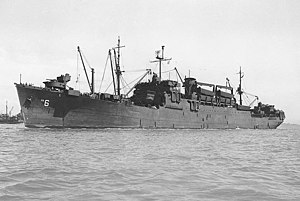
USS Neville (AP-16/APA-9) was a Heywood-class attack transport in service with the United States Navy from 1918 to 1919 and from 1940 to 1946. She was scrapped in 1957.

USS Duplin (AKA-87) was a Tolland-class attack cargo ship of the United States Navy, in service from 1945 to 1946. She was sold into merchant service in 1946 and finally scrapped in 1971.

Attack transport is a United States Navy ship classification for a variant of ocean-going troopship adapted to transporting invasion forces ashore. Unlike standard troopships – often drafted from the merchant fleet – that rely on either a quay or tenders, attack transports carry their own fleet of landing craft, such as the landing craft, vehicle, personnel (LCVP) or Higgins boat.

USS Grafton (APA-109) was a Bayfield-class attack transport which served with the United States Navy from 1945 to 1946. She was sold into commercial service in 1947 and was scrapped in 1975.

The Gilliam-class attack transport was a class of attack transport built for service with the US Navy in World War II.

USS Hugh L. Scott (AP-43) was a Hugh L. Scott-class transport ship. She was built in 1921 and spent 20 years in merchant service as a passenger and cargo liner. In July 1941 the ship was delivered to the United States Department of War for Army service as the United States Army Transport Hugh L. Scott operating in the Pacific. In August 1942 the ship was transferred to the United States Navy for conversion to an attack transport, served as a troopship in Operation Torch in November 1942, and was sunk by a U-boat four days later. 59 crewmen and soldiers died during the sinking.

USS George F. Elliott (AP-13) was a Heywood-class transport acquired by the U.S. Navy during World War I and then reacquired by the Navy for service as a troop carrier during World War II. In 1942, she was attacked off Guadalcanal by Japanese planes and sank shortly thereafter.
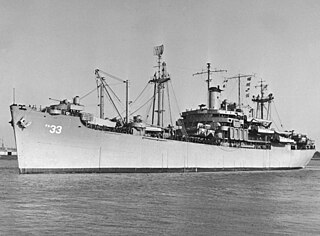
The Bayfield-class attack transport was a class of US Navy attack transports that were built during World War II.
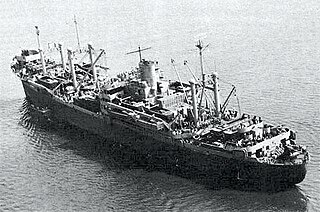
The Sumter-class attack transport was a class of attack transport built for service with the US Navy in World War II.

The Frederick Funston-class attack transport was a class of two US Navy attack transports. They saw service in World War II and later in the Korean War.

The Windsor-class attack transport was a class of nine US Navy attack transports. Ships of the class saw service in World War II.

USS Crescent City (AP-40/APA-21) was the lead ship of the Crescent City-class attack transports that served with the US Navy during World War II. The ship was built as the cargo and passenger liner Delorleans for the Mississippi Shipping Company's Delta Line. After brief commercial operation the ship was among 28 vessels requisitioned in June 1941 for the Navy and the Army. The Navy renamed the ship Crescent City, a popular nickname for New Orleans, Louisiana, upon commissioning 10 October 1941. The ship was decommissioned and laid up in 1948 before being loaned to the California Maritime Academy to serve as a training ship 1971–1995 and then transferred to a foundation in a failed art colony project. The ship left California for Texas scrapping in 2012.

USS Leonard Wood (APA-12) was built by Bethlehem Shipbuilding Corporation and launched 17 September 1921 at Sparrows Point, Maryland as Nutmeg State, an Emergency Fleet Corporation Design 1029 ship intended as a World War I troop transport, but redesigned upon the armistice as a passenger and cargo ship and completed as Western World for delivery to the United States Shipping Board. The ship's acceptance on 5 May 1922 and delivery on 9 May 1922 marked the completion of the wartime shipbuilding program of the Emergency Fleet Corporation and the Shipping Board.
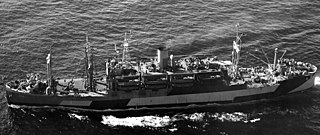
USS J. Franklin Bell (APA-16) was a Harris-class attack transport ship. She was built in 1921 and spent 20 years in merchant service as a passenger and cargo liner. She was acquired for the United States Army in 1940 and transferred to the United States Navy shortly after the USA entered the Second World War. She served throughout and after the Pacific War, was decommissioned in 1946 and scrapped in 1948.

The Harris-class attack transport was a class of US Navy attack transport which saw service in World War II. The purpose of any attack transport was to deliver troops and their equipment to hostile shores in order to execute amphibious invasions using an array of smaller integral landing craft. Being intended to serve in forward combat areas, these ships were well armed with antiaircraft guns to protect itself and its vulnerable cargo of troops from air attack in the battle zone.

USS William P. Biddle (APA-8) was a Heywood-class attack transport in service with the United States Navy from 1941 to 1946. She was scrapped in 1957.
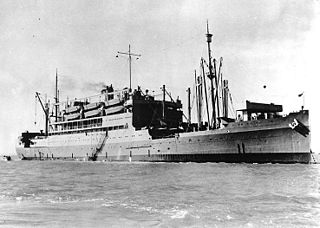
The McCawley-class attack transport was a class of US Navy attack transport built in 1928 that saw service in World War II.

The Arthur Middleton-class attack transport was a class of three US Navy attack transport that saw most of its service in World War II. Ships of the class were named after signatories of the American Declaration of Independence.

USS George F. Elliott (AP-105) was a cargo liner built for the Mississippi Shipping Company as SS Delbrasil for operation between New Orleans and the east coast of South America in 1939 by its operator, Delta Line. The ship entered that service and operated until taken over by the War Shipping Administration (WSA) on 28 April 1942 for operation by Delta Line acting as WSA's agent. On 25 August 1943 WSA allocated the ship to the Navy for conversion to a troop transport commissioned and operated by the Navy for the duration of the war. Ownership of the ship was transferred from Mississippi Shipping to WSA on 4 February 1944 while under Navy operation and was retained until sale to American South African Lines on 22 December 1948. The ship was renamed African Endeavor until returned as a trade in to the Maritime Commission on 22 September 1960 for layup in the James River reserve fleet and later sold to Boston Metals for scrapping.

SS Antigua was a United Fruit Company passenger and refrigerated cargo liner completed as one of six nearly identical vessels, three built by Newport News Shipbuilding and three by Bethlehem Shipbuilding Corporation, for operation by the company's subsidiary the United Mail Steamship Company. The ship was the first of the ships built by Bethlehem Shipbuilding Corporation, Quincy, Massachusetts.
